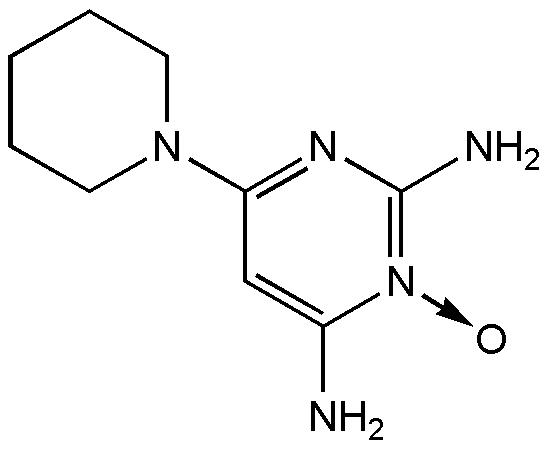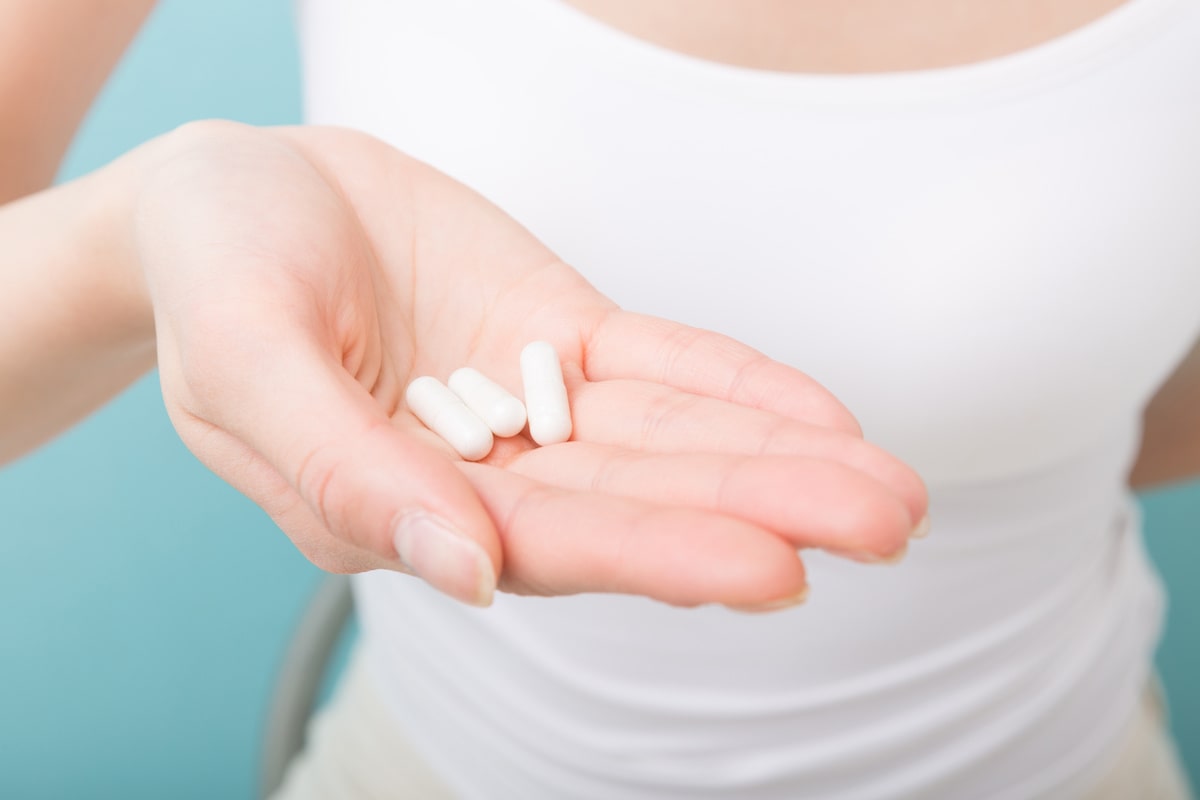Oral minoxidil for women with hair loss: an underutilized treatment?
Although topical minoxidil seems to get most of the attention as a hair loss treatment, its oral counterpart is also effective at promoting hair regrowth in both males and females.
Generally, higher dosing means better efficacy, but with a higher risk profile. As it relates to oral minoxidil, this means limb swelling, low blood pressure, and, potentially, heart palpitations. But, there’s one side effect that may be more concerning for women taking oral minoxidil than men: excessive body hair growth.
Considering this is something most women want to avoid or may also struggle with alongside their hair loss (in cases of female androgenic alopecia), this side effect could be of significant concern.
So, is there a way we can harness the hair-growing effects of oral minoxidil without the side effects?
Yes. This Quick Win dives into the research: the clinical evidence, the best dosages, and the best ways to avoid excessive body hair growth while taking this medication.
Note: Quick Wins are short articles focused on answering one question about hair loss. Given their specificity, these articles are written in a more scientific tone. If you’re new to hair loss education, start with these articles.
Oral minoxidil: research at a glance
What is oral minoxidil?
Oral minoxidil was initially developed as a treatment for ulcers, but later rebranded as a medication that might potentially lower blood pressure. During clinical trials, a lot of participants started reporting unexpected hair growth. This led researchers to reformulate minoxidil as a topical for hair loss, which eventually became FDA-approved in 1988.
Minoxidil’s structure

While no one is quite sure how minoxidil works to regrow hair, researchers suspect that it has something to do with minoxidil’s ability to (1) improves blood flow, and (2) increase prostaglandin E2 synthesis – a fatty acid derivative that likely plays a role in hair cycle maintenance.
Is oral minoxidil better than topical minoxidil?
Potentially. Both oral and topical minoxidil need to interact with an enzyme called sulfotransferase before becoming active and eliciting any effects on our hair follicles. Unfortunately, many men and women who are losing their hair also lack enough sulfotransferase in the scalp skin for topical minoxidil to do its job. This likely explains why for 30-40% of people, topical minoxidil doesn’t work at all (myself included).
Enter oral minoxidil. This drug is metabolized is activated in the liver – where there is plenty of sulfotransferase to go around – and then rapidly distributed to tissues throughout the body. This is why, when it comes to regrowing hair, oral minoxidil has a much higher response rate – typically 90-100%.
Unfortunately, with the rapid tissue distribution of oral minoxidil, we can also experience its hair-growing effects elsewhere in the body: namely, across our chests and faces.
This isn’t such a problem for men (in fact, many men enjoy the increased body and facial hair growth). But for women, this can be a dealbreaker – with the fear of unwanted body hair growth relegating them topical minoxidil or other treatment options.
So, for females, is there a way to mitigate any unwanted side effects of oral minoxidil while still maximizing its hair-promoting effects?
Yes.
Clinical studies
Unlike the research on topical minoxidil, oral minoxidil research is sparse (especially in women). Nevertheless, there do seem to be certain dosages of oral minoxidil – and combination therapies – that greatly reduce the risk of unwanted hair growth in women.
Here’s a table of the studies conducted on women taking oral minoxidil for hair loss.
| Daily Dose (duration) | Type of Hair Loss | Results | Side Effects |
| 1mg daily (6 months) (1) | Female Pattern Hair Loss | 12% increase in hair count | Limb Swelling: 4%
Hypotension: 0% Excess Hair Growth Outside the Scalp: 27% |
| 0.25mg + 25mg spironolactone daily (12 months) (2) | Female Pattern Hair Loss | 72% improvement in hair loss severity | Limb Swelling: Not reported
Hypotension: 2% Hives: 2% Excess Hair Growth Outside the Scalp: 4% |
| 0.25mg-2.5mg with most patients taking 1mg (12 months) (3) | Chronic Telogen Effluvium | 45% improvement in hair loss severity | Limb Swelling: Not reported
Hypotension: 5% Excess Hair Growth Outside the Scalp: 38% |
Looking at the results, we see that all doses of oral minoxidil are effective at promoting hair growth: 1.5-2 mg by itself, and 0.25 mg of oral minoxidil in combination with 25 mg of spironolactone (an anti-androgen drug).
When analyzing side effects, serious adverse events – like hypotension and limb swelling – are uncommon, even with doses as high as 1-2.5mg. But at these dosages, there are quite a few women (27-38%) reporting unwanted hair growth elsewhere on the body… which is exactly what we’d like to avoid.
But there’s an inflection point: a dosage that we can minimize the risk of unwanted hair growth (hypertrichosis) while maximizing oral minoxidil’s pro-hair effects on the scalp.
It’s with 0.25mg of oral minoxidil + 25mg of spironolactone daily.
With this daily dosage of oral minoxidil + oral spironolactone, only 4% of women report excess hair growth… while the majority of females in the study saw significant improvements to their scalp hair loss.
What this means: this combination therapy of low-dose minoxidil + low-dose spironolactone (an anti-androgen drug) is sort of the oral minoxidil “sweet spot” – at least in terms of lowering your risk of body hair growth, and raising your likelihood of scalp hair growth.
Low-dose oral minoxidil + low-dose oral spironolactone is a winning formula for female hair loss sufferers
But, what if you’re sensitive to spironolactone?
Although 0.25 mg of oral minoxidil alongside 25 mg of spironolactone daily might be a viable option for many women with hair loss, spironolactone can cause mild allergic reactions in sensitive individuals. (4, 5) While these effects are rare, we have had some members of our community echo these concerns and even report adverse reactions of their own.
So, maybe you’ve found that you’re sensitive to spironolactone and that combining low dose spironolactone + oral minoxidil isn’t an option for you. What’s the next best option?
At this point, it really depends on what your tolerance for higher dosages of oral minoxidil (and their potential for side effects). Higher doses of 1mg to 2.5mg will likely provide results, but also increase your risk of body/facial hair growth.
If you have milder hair loss or really aren’t comfortable with increased body/facial hair (or don’t want to manage it with other therapies), you can always start with 0.25mg of minoxidil on its own. If it still isn’t providing the results you’re looking for, you can always look into alternative oral or topical therapies to bolster your results. As always, discuss your options with your doctor before doing anything.
You may also decide to implement totally different therapies. After all, many females have seen success treating hair loss outside of the drug model, and with therapies like:
…and more. So, before you jump on any treatment, make sure that you have a firm understanding of 1) the drivers of your hair loss, and 2) your treatment options. Then, make an action plan for hair recovery that’s tailored to your needs and preferences.
What’s the bottom line?
If you’re a female with pattern hair loss, and your goal is to maximize the hair-promoting properties of oral minoxidil while minimizing your risks of hypertrichosis, research shows that combining 0.25mg of oral minoxidil with 2.5mg of spironolactone is likely your best option. At these dosages, you’re positioning yourself for scalp hair growth while minimizing the risk of body hair growth.
If spironolactone isn’t an option for you, that’s okay. Higher doses of oral minoxidil (1-2.5mg) don’t present with any increased risk of hypotension or limb swelling, but at these dosages, 27-38% of women do report excess body/facial hair growth in clinical studies. If this is a concern for you, consider combining low-dose oral minoxidil with alternative therapies or opting for another treatment altogether.
Lastly, oral minoxidil is a prescription medication. So be sure to consult your doctor before doing anything.
Question? Comments? Please reach out in the comments section.

Rob English is a researcher, medical editor, and the founder of perfecthairhealth.com. He acts as a peer reviewer for scholarly journals and has published five peer-reviewed papers on androgenic alopecia. He writes regularly about the science behind hair loss (and hair growth). Feel free to browse his long-form articles and publications throughout this site.



Hey Rob,
I’m a female dealing with AGA (diffuse; lots of miniaturisation). I don’t want to commit to minoxidil lifelong. I recently read a comment of a derm who uses Minoxidil to “jump start” the follicles and getting terminal hairs to grow. Do you think it would be possible to do this but then stop minoxidil and maintain with massages, microneedling and essential oils without losing all the progress to shedding?
Also, I’d love to learn about the long-term side effects of minoxidil. I’m wondering if there is a similar effect than with finasteride which seems as you say to increase the androgen receptors.
Hey Marie,
In my experience working with hair loss sufferers, it seems like the outcomes are split. About 50% of people can transition away from minoxidil / finasteride, replace these things with alternative therapies/interventions, and maintain most of the gains from those drugs. The other 50% see some loss in hair density, with the possibilities ranging from a little to “back to baseline” (pre-treatment).
I’d be happy to discuss more in a one-on-one consult (through our membership), but I wanted to set this precedent regardless. There are likely many other options for you, too – depending on your specific needs and preferences.
Best,
Rob
Great article!
What are your thought on combining low dose oral minoxidil with 125mg flutamide for females.
Diana
Thanks! I think it’s potentially a wonderful idea, though you might need to play with the dosage of flutamide. There’s some evidence supporting daily use of 0.25 mg oral minoxidil + 25 mg spironolactone, so that’s another option.
Best,
Rob